There has been plenty of speculation in the SEO world over the past few months regarding SGE (Search Generative Experience). Most folks I talked to about SGE have very strong opinions ranging from extreme anxiety to near-total confidence that SGE will never be launched and will remain an experiment forever.
As always, our default at Onely is to gather hard data and start a new discussion based on facts and numbers.
This article will show some of the findings we have gathered over the last couple of months, some trends that show the exact verticals that Google seems to be focused on, and some verticals that Google seems to be cautious about when it comes to SGE.
Google SGE – coverage
Let’s start with the coverage of SGE – when SGE was announced, we started building a tool to analyze SERPs on a weekly basis to understand what percentage of keywords are being targeted by SGE (we track mainly popular, short-tail keywords).
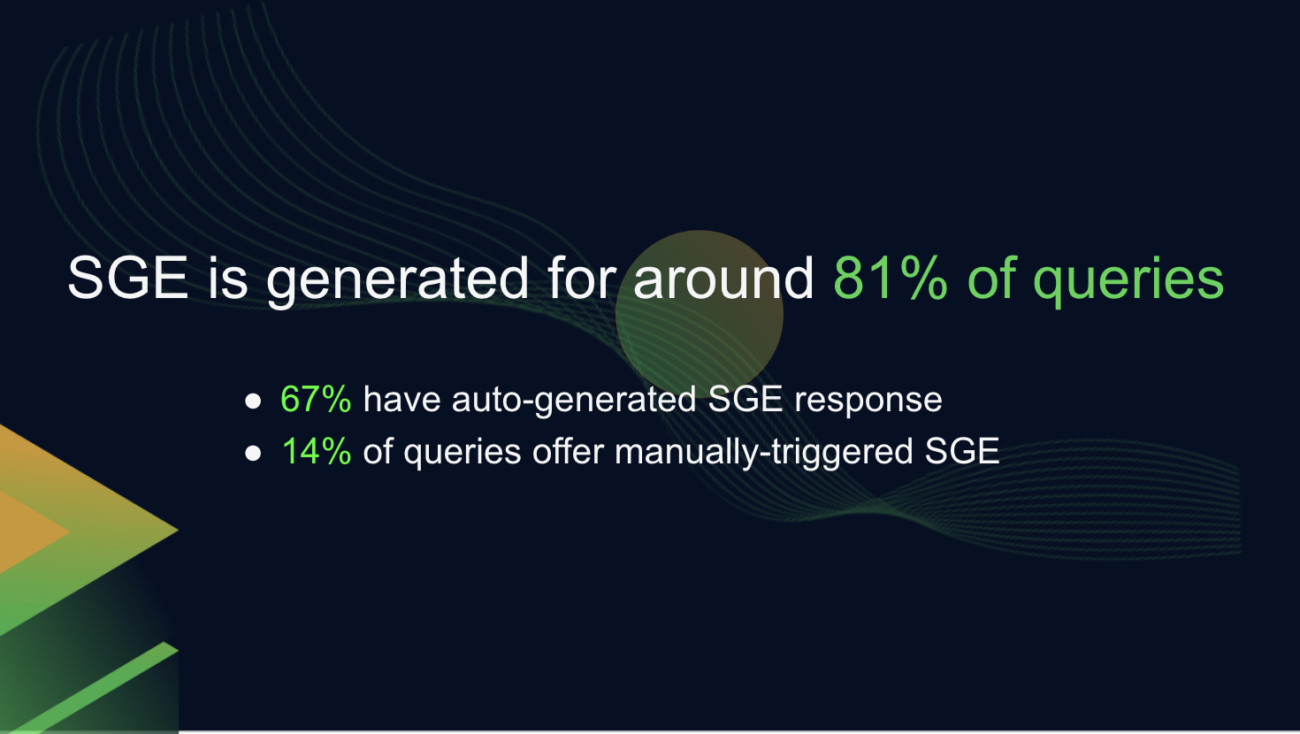
As of July 30th, 2023, SGE results were available for 81% of queries in our database. Out of the 81%, 67% of the results had SGE auto-enabled, and 14% required users to click the “Generate” button as per the screenshot below (I’ll call it a forced response throughout this article).

This shows that Google is heavily invested in SGE, with only 19% of queries we analyzed excluded from SGE results. To understand this better, let’s dive into specific verticals.
Search Generative Experience – verticals
When analyzing SGE, we focused on understanding which verticals Google seems to target the most and which are “off limits.” I’ll start with YMYL (Your Money Your Life) queries that I was surprised to see in SGE results.
Health – SGE coverage
Seeing SGE results enabled for medical & health queries came to me as a bit of a shock as Google spent the last few years pushing a lot of algorithm changes addressing YMYL queries (EEAT etc.) that SGE seems to ignore completely. In other words, Google seems to ignore its own recommendations, which you can see in its manual rater’s guidelines, which wasn’t what I’d expect from them.
Before we dive into the data, have a look at the screenshot below:
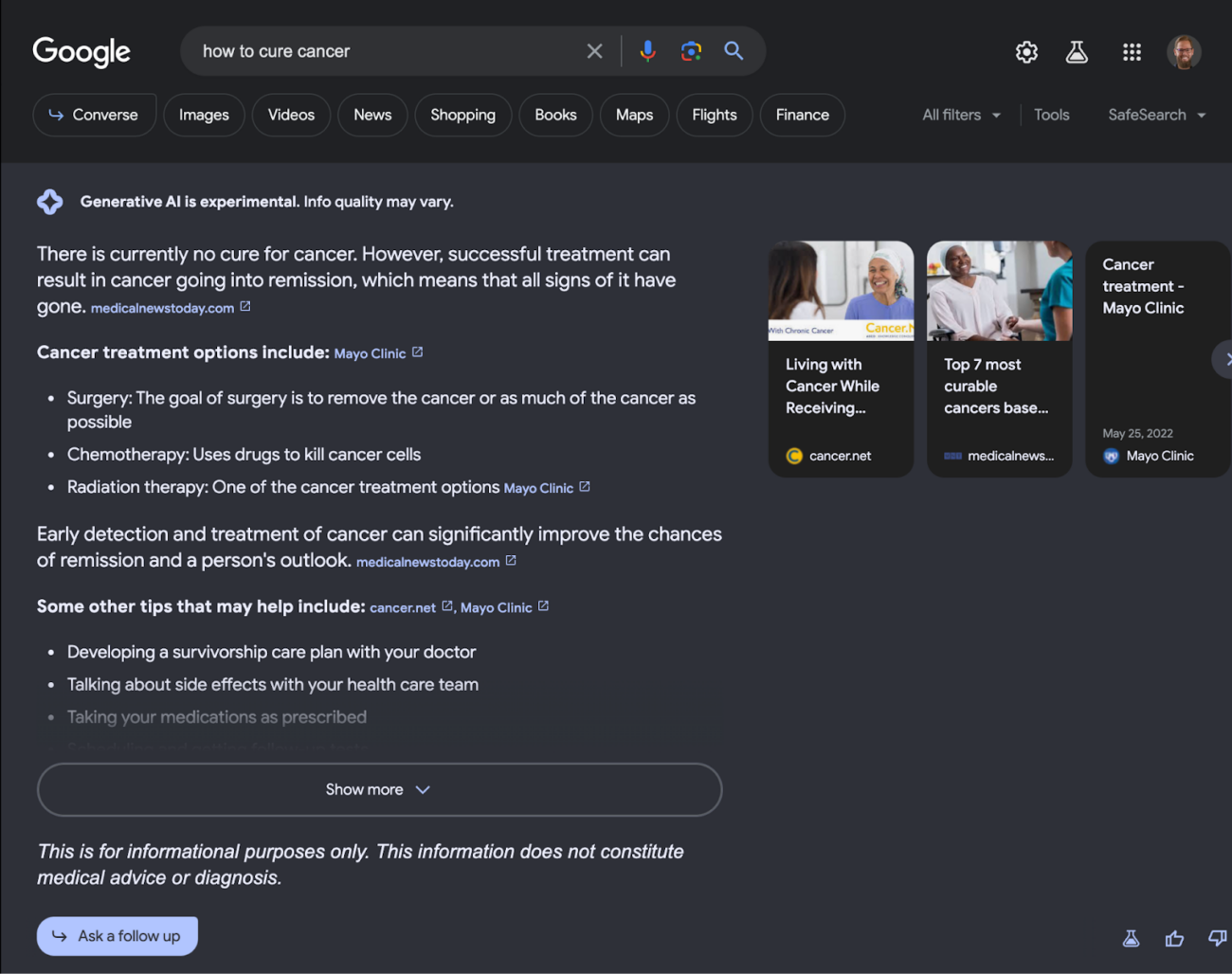
Following Google’s guidelines, with such advice, we should be able to see who the author of these recommendations is, and I’d expect indications showing the credibility of the source of such important information. Not only is this not present, but knowing that AI is often hallucinating and showing misinformation, targeting health-related queries seems irresponsible, to say the least. However, There is one keyword in the health space that Google won’t touch, and it is… COVID.
COVID queries are off-limits
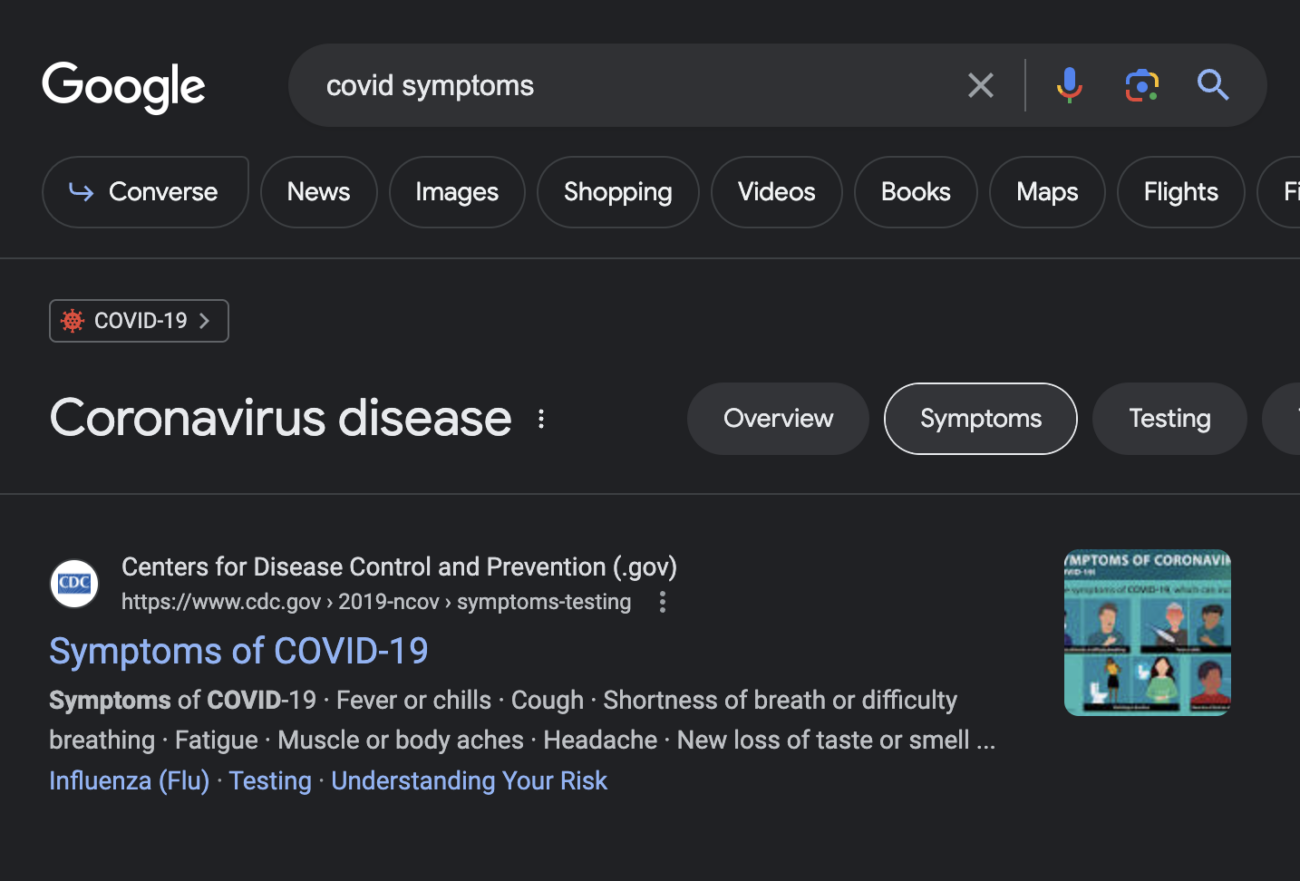
We tried a lot of COVID-related queries, and so far, it seems to be one of the few keywords that Google won’t touch. Even forcing the answer (pressing the Converse button in the top left corner) doesn’t enable an SGE response.
Medical queries – SGE trend & coverage
As of this writing, Google’s SGE targets 87% of medical/health-related queries we track in our database. This number came as a surprise to me as it grew from 70% on July 1st, 2023, to 83% on July 31st, 2023. This highlights that not only is Google refusing to back off this vertical, but it’s doubling down on covering even more health-related queries.
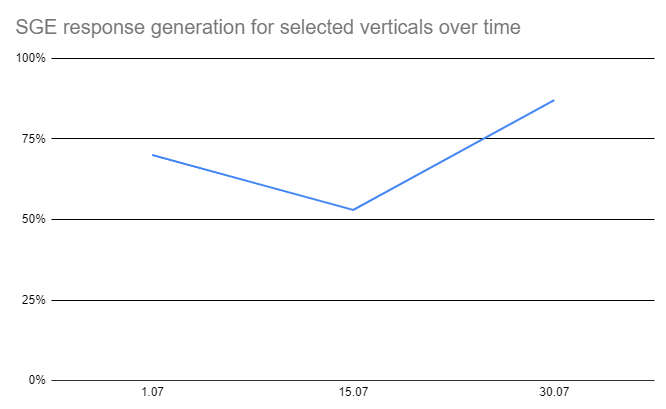
There is one vertical that Google seems to be avoiding and where the trend only grew 2%, and that is … finances and investment.
Finances – SGE coverage
After seeing that Google is heavily targeting health queries, I asked Marcin from our R&D team if all the YMYL verticals are fair game for Google. It turned out that finances & investment were the only ones where Google had some kind of boundary.
Finance-related queries from our database are only covered in 24% of cases, which is only a 2% increase from 22% coverage on July 1st (in this article, I’ll compare the two most recent data points – July 1st and July 30th).
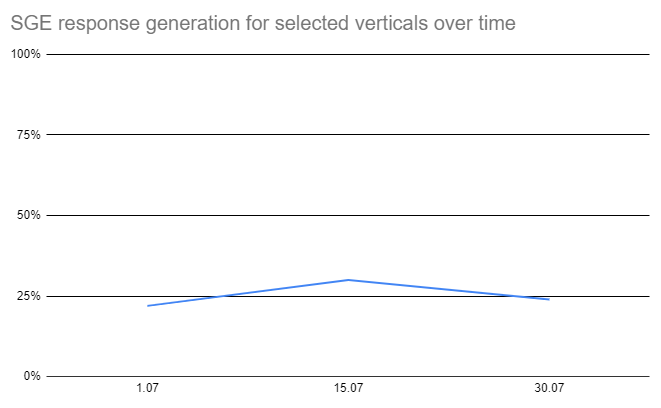
Now that we’ve covered YMYL queries, let’s dive into even more exciting data about eCommerce.
eCommerce – SGE Coverage
eCommerce queries seem to be Google’s core focus, with a staggering 92% coverage as of July 30th, 2023 (an increase from 79% on July 1st, 2023). This comes as a no-brainer because Google has been heavily focused on gaining an in-depth understanding of eCommerce queries since its inception. I believe that this might be a very powerful weapon in Google’s arsenal to compete with Bing, which seems to be taking Google’s market share bit by bit since their Bing AI integration was announced.
Other verticals
I won’t cover all the verticals in this article as it would take a few days to combine our data, and we are working on a comprehensive whitepaper showing more findings from our research. My goal here is to provide you with a few crucial insights that will help you understand where SGE is going.
In the graph below, you can see some of the most interesting changes in SGE coverage measured on July 1st and July 30th, 2023.
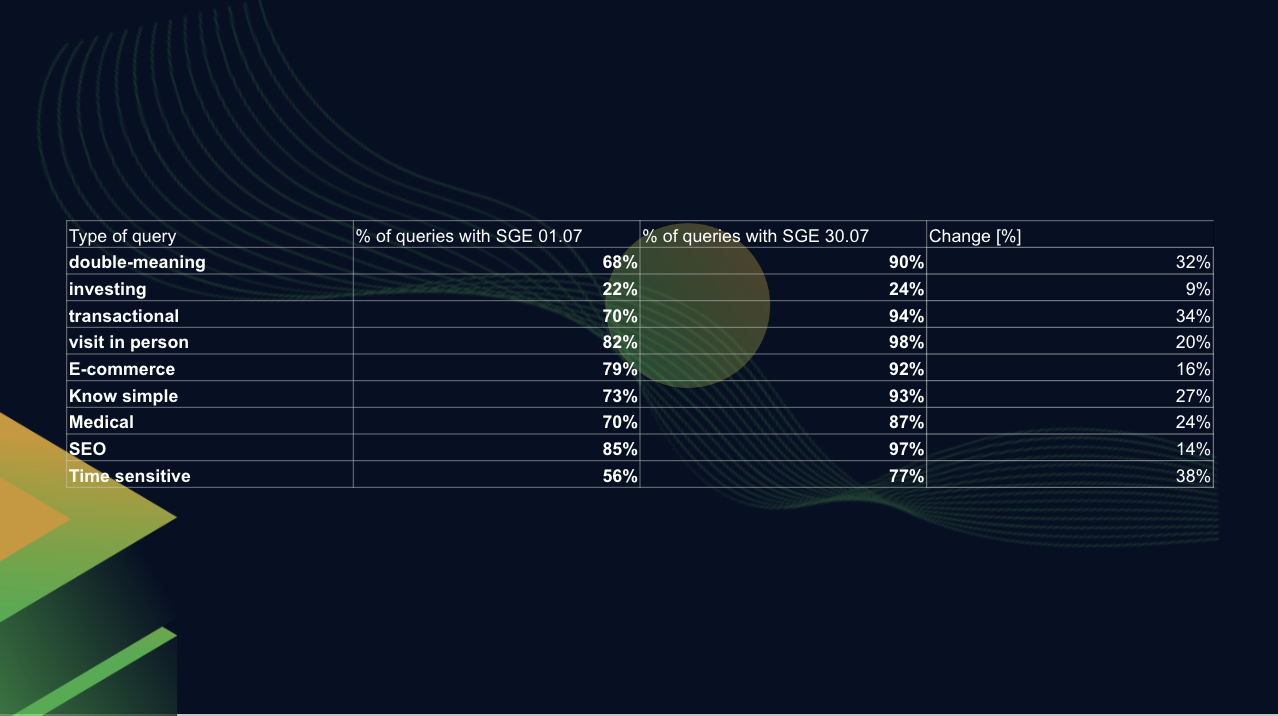
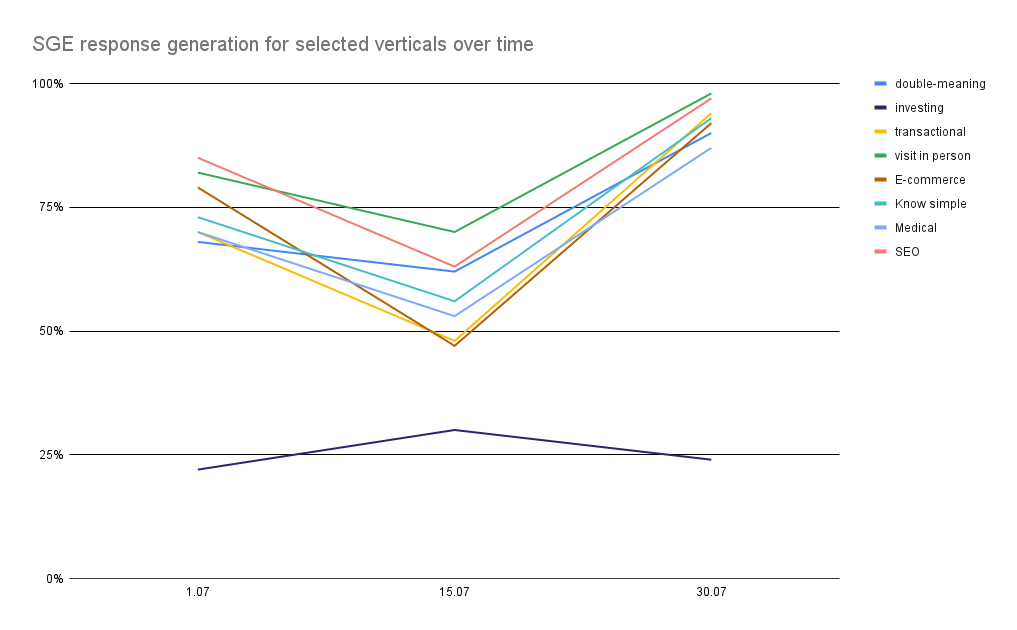
On top of the verticals, SGE has its triggers. By using specific keywords, you can trigger SGE results almost every single time.
SGE triggering keywords
During our research, we quickly realized that we could trigger SGE results by using the right keywords. Some of the examples below:
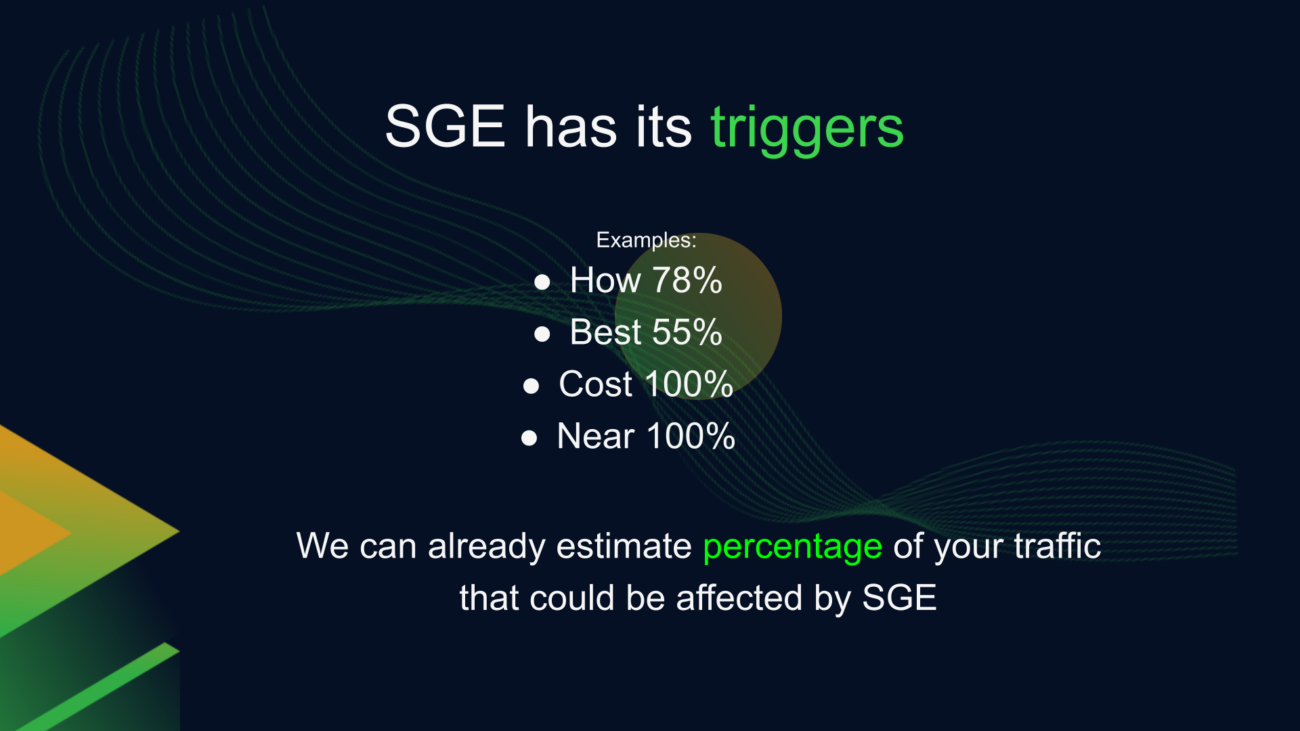
Just as with verticals, these triggers change month to month, and we can already see that Google is heavily investing in SGE, most likely by assigning more and more computing power and resources to support this AI layer of Google’s SERPs. Interestingly, queries where Google’s database is the most expansive, like “Near Me” or “Cost” are covered 100% of the time during our checks. Google has extensive knowledge of both locations (from, Google Maps) and prices of different products (from Google Merchant Center)
This shows that Google relies heavily on its Knowledge Graph, Google’s Index, and all the data it gathered over the years to provide SGE-generated answers to users. This topic was covered in depth in my “MUM” webinar with Cindy Krum, who spent years analyzing how Google builds its Knowledge Graph to get a better understanding of how different elements of the web come together.
This being said, let’s briefly chat about SGE’s quoted sources.
SGE – data sources
SGE results are now commonly taking whole above-the-fold space, even on a desktop. The only way to get clicks from these results is to be mentioned as a source of the data in the top right corner.
As an example, let’s say that I am searching for a bike to ride on trails around my neighborhood in Austin, Texas. The SGE response I get takes up most of the space above the fold. Assuming users won’t scroll down to view organic results, website owners can only hope to get clicks from sources in the upper right corner.
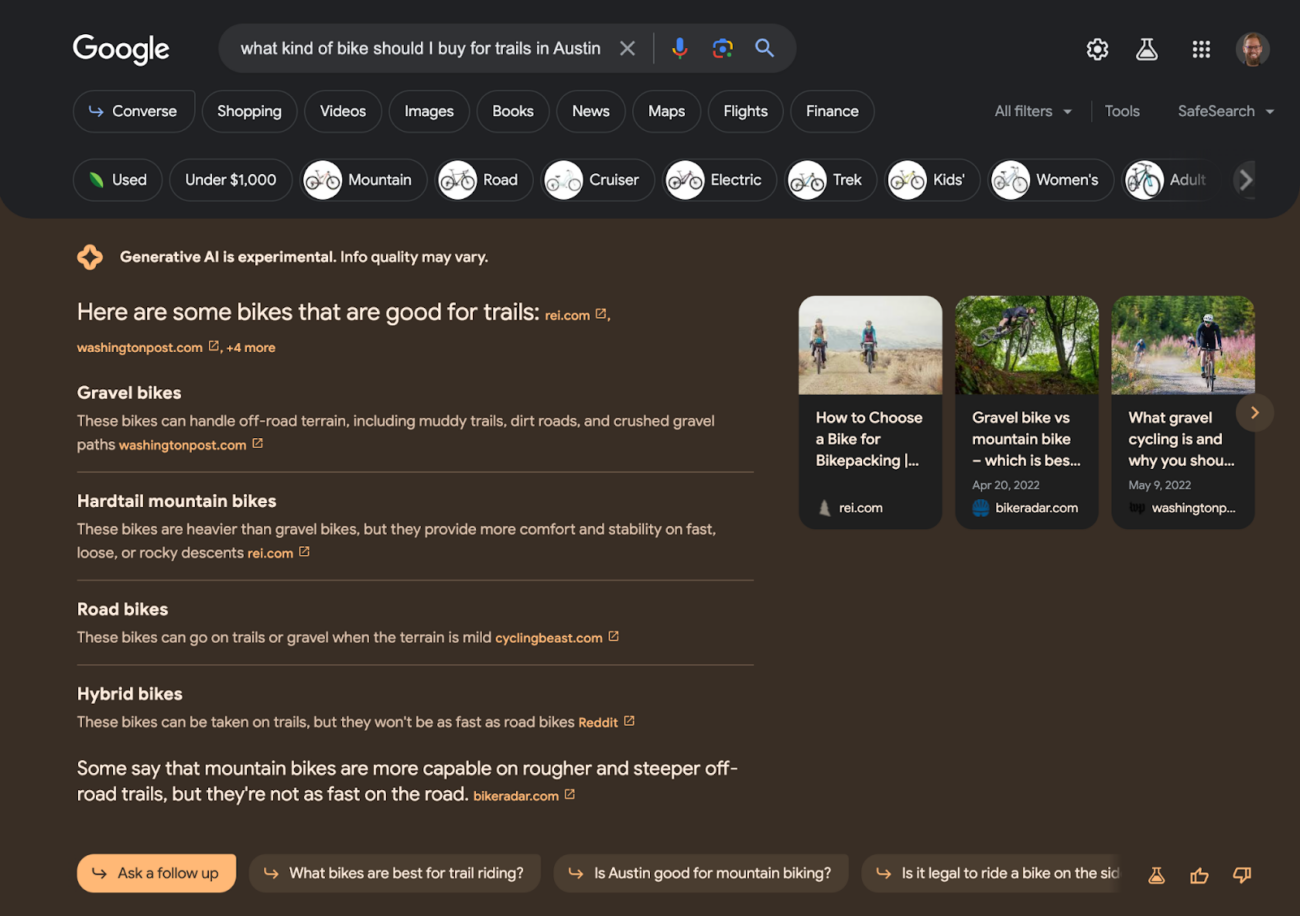
This being said, we’ve found out that not only is there an interesting logic regarding how these sources are chosen, but also the number of sources has increased.
SGE expansion
The average number of sources for SGE increased from 3.3 results (July 1st, 2023) to 5.5 (!) results (July 30th, 2023).
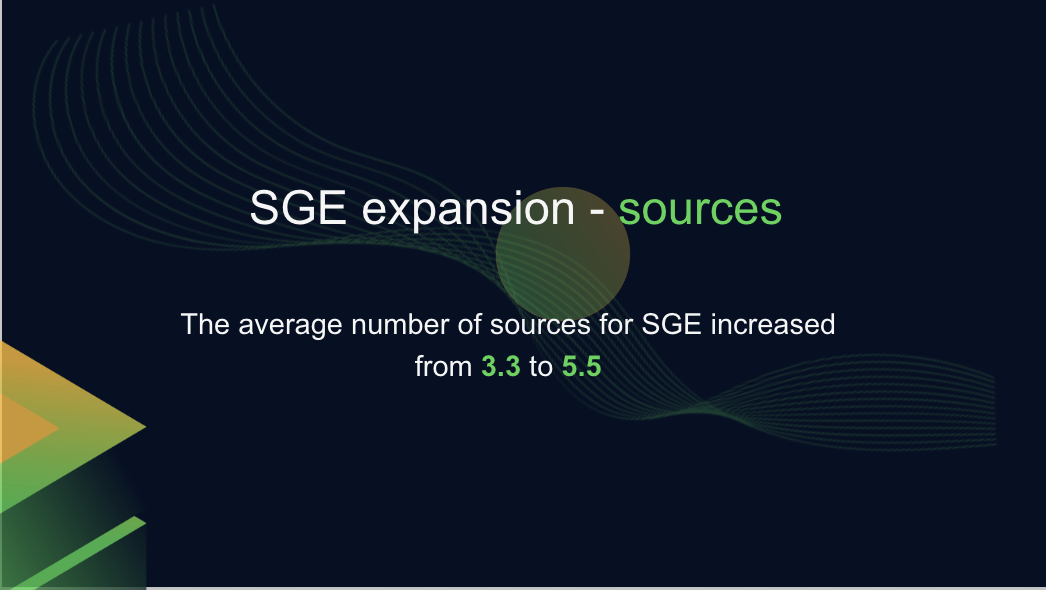
It is hard to speculate on what that means outside of what I already mentioned – it seems that Google is pushing more resources into SGE, and this project is definitely growing quite a bit.
SGE – sources vs. rankings
In my early days of researching SGE I had assumed Google would build it using a logic similar to what they used when generating featured snippets. Boy, was I wrong! SGE seems to have its own logic and, unlike featured snippets (usually you need to rank above #7 and in some cases above #10), SGE is picking sources that are often even from position #60+. Shockingly, only 85% of sources quoted in SGE results rank within the top 10 positions for a given query.
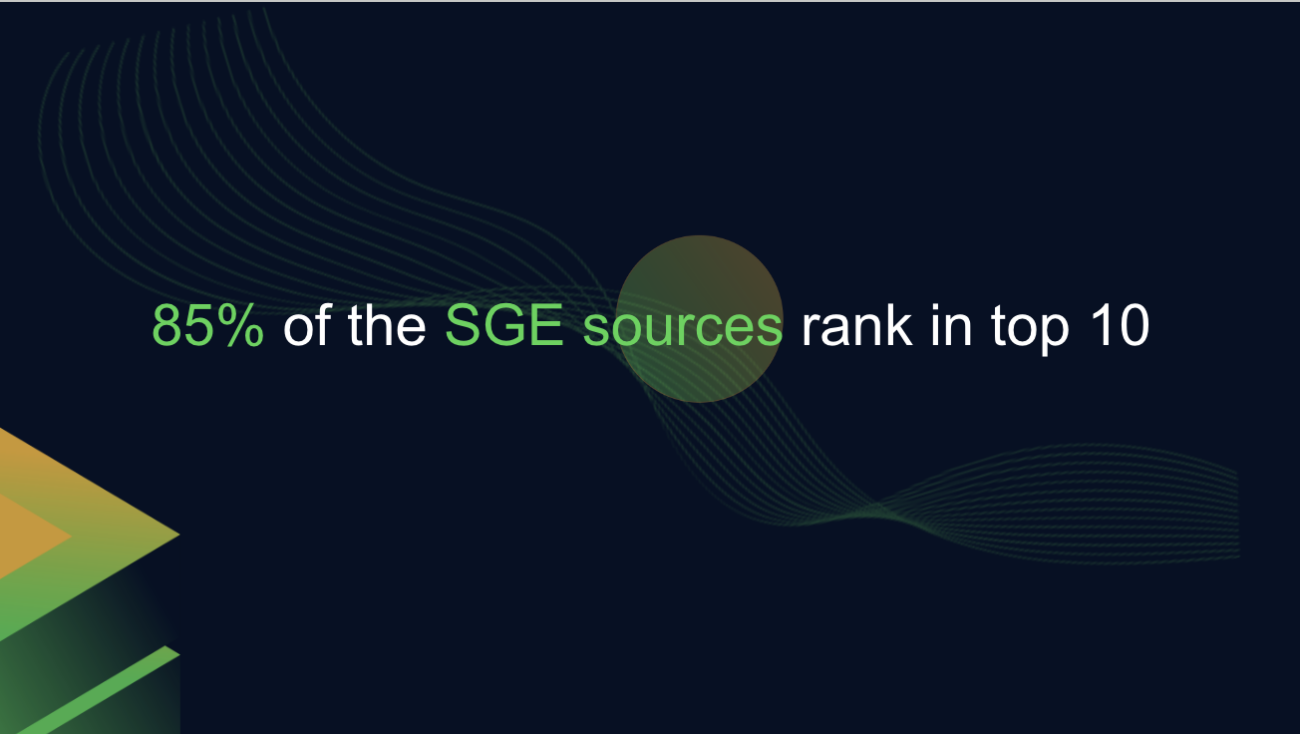
If you want to see the exact ranking distribution, you can have a look at the pie chart from our database.
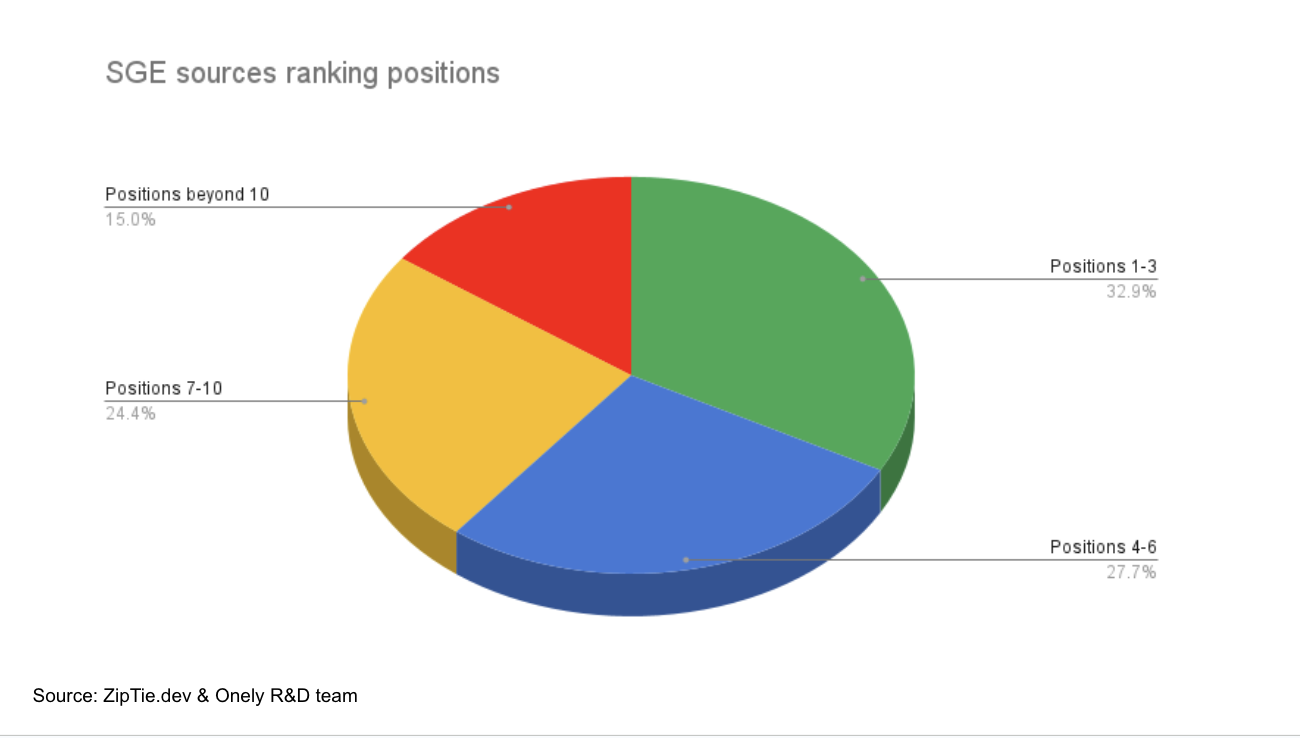
This shows that Google is using a different logic for SGE, and optimizing may require different tactics.
Speaking of which, we are all wondering about when SGE will go public. While I cannot answer this question, I can point out a few things that have to be fixed before we can expect that to happen.
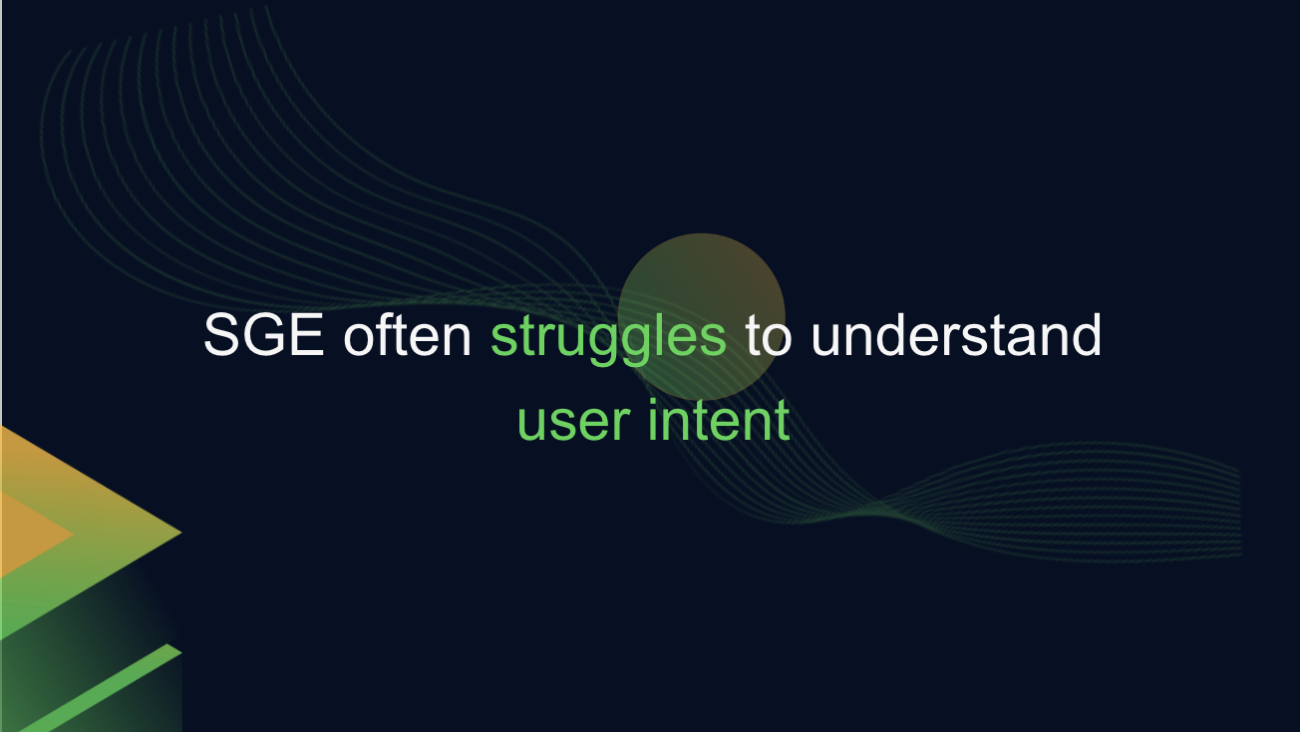
The most important thing to know is while Google is REALLY good at understanding user intent, SGE is far from it. Both algorithms are based on machine learning, and my assumption is that it might take a while for Googlers to find a way to merge these two ecosystems.
Let me show you a few examples (we have hundreds of these)
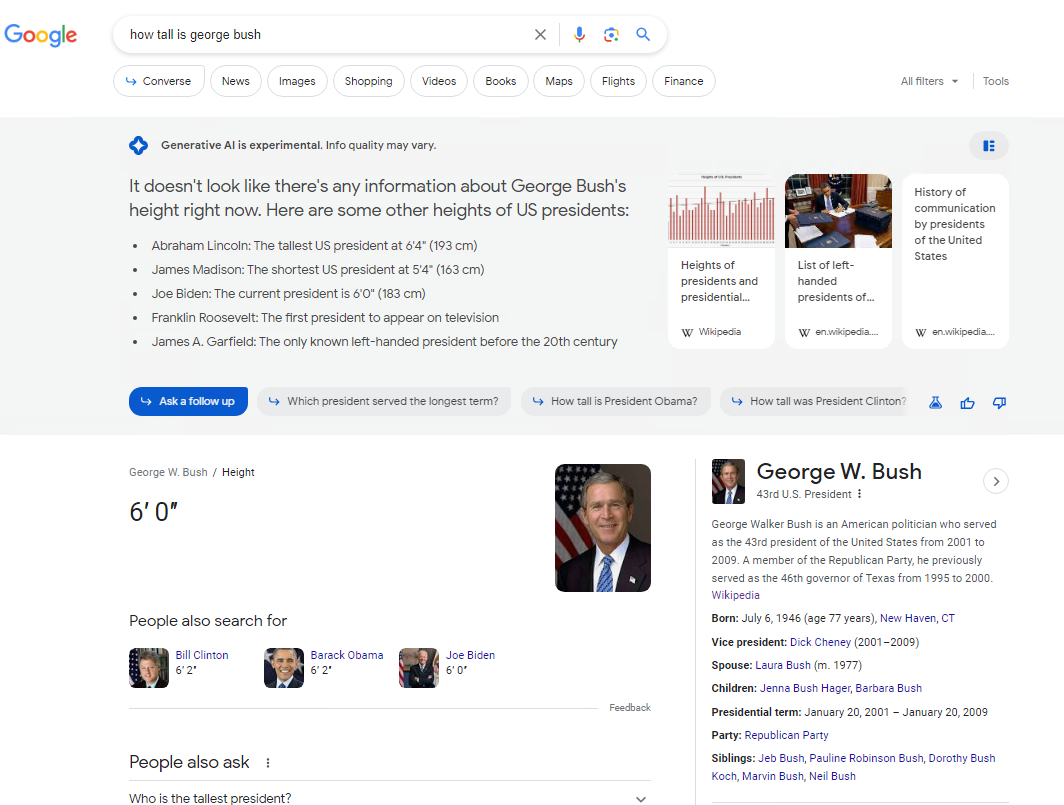
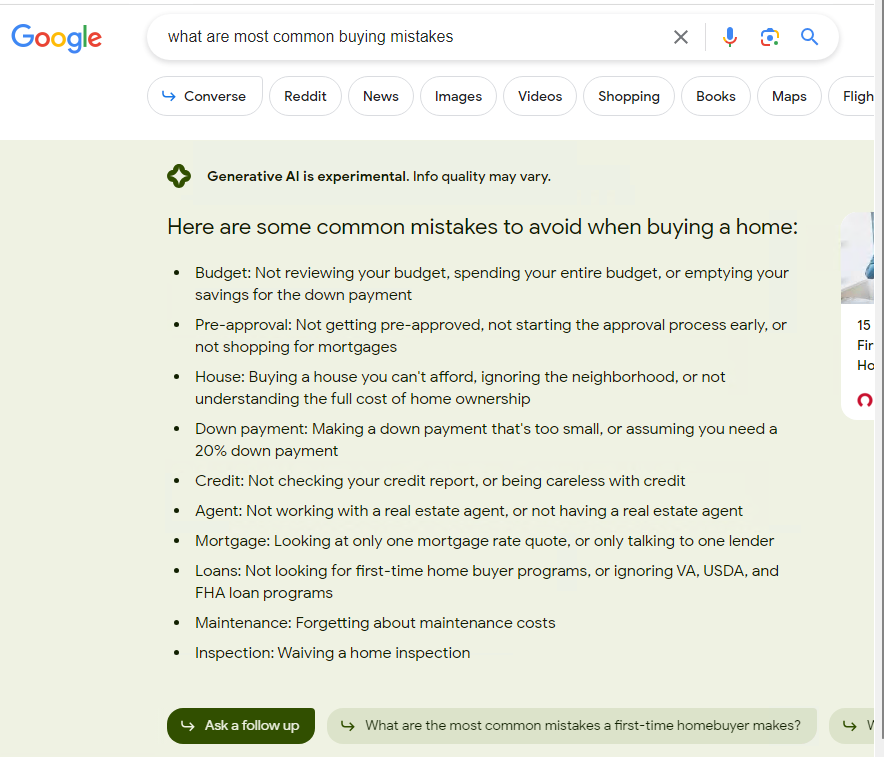
“Where not to buy online” query

“How often to audit SEO” query
Read the one below closely and see if you can figure out the best cadence for SEO audits 🤣
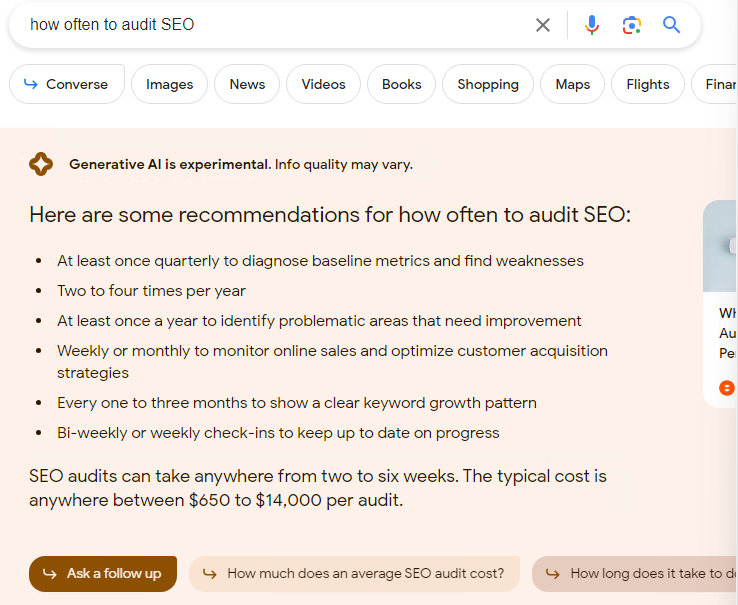
“Real Estate Investment Calculator” query
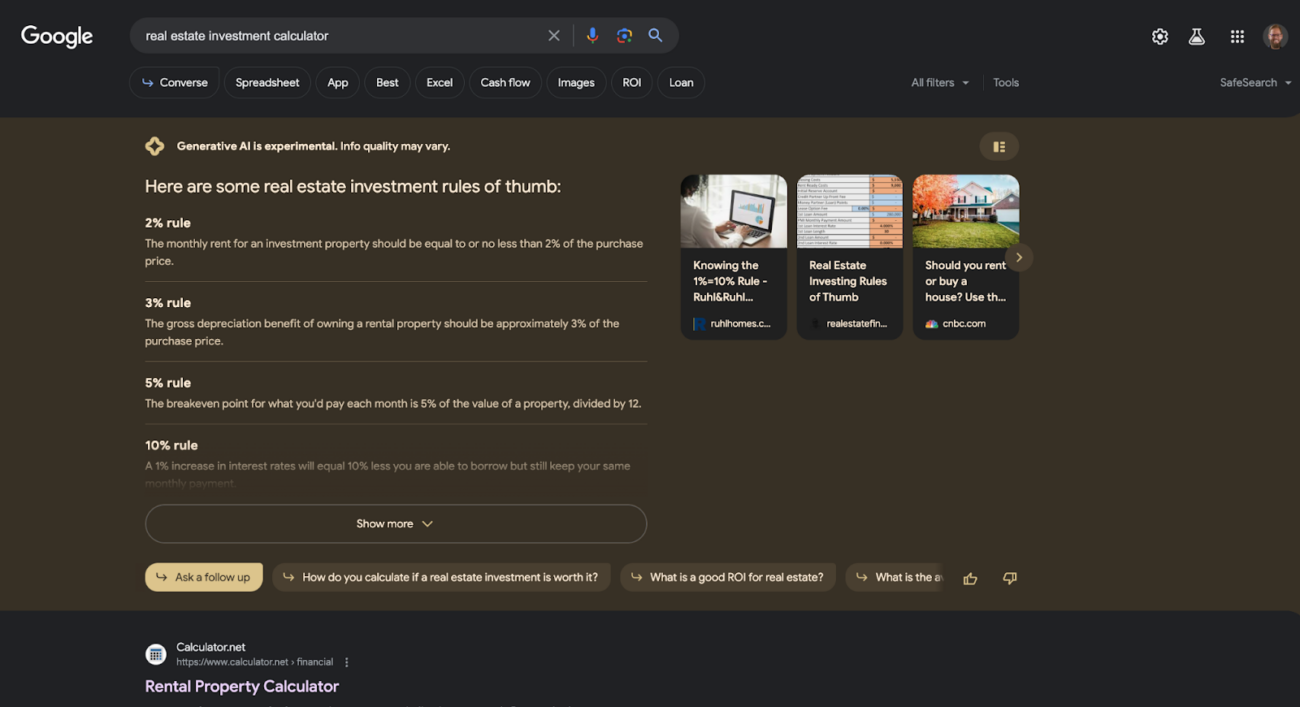
Outside of these obvious quality problems (that are to be expected during the experimental phase), there are some issues that are more concerning, however this topic is covered very well by Tomek Rudzki in his 7 Deadly Sins of Google’s SGE article.
SGE timeline
If you got to this part of the article, you probably have a fairly clear understanding of what would have to happen for SGE to launch fully. On the other hand, we can clearly see that Google has a very strong focus on growing SGE. Our research shows that SGE results change significantly even with a weekly check cadence. My approach to predicting the launch date is to track SGE result quality. As soon as they deliver the same or better experience to users as “regular” SERPs, we can expect Googlers to push the red button and launch SGE globally.
Google’s history with AI runs deep
I started to follow Google’s strong focus on AI and machine learning closely in 2016 when Amit Singhal (who wasn’t a fan of machine learning) was replaced by John Giannandrea who took Google’s algo from algorithm-based to machine-learning based. I even found a few screenshots from my UnGagged Las Vegas deck from 2016.
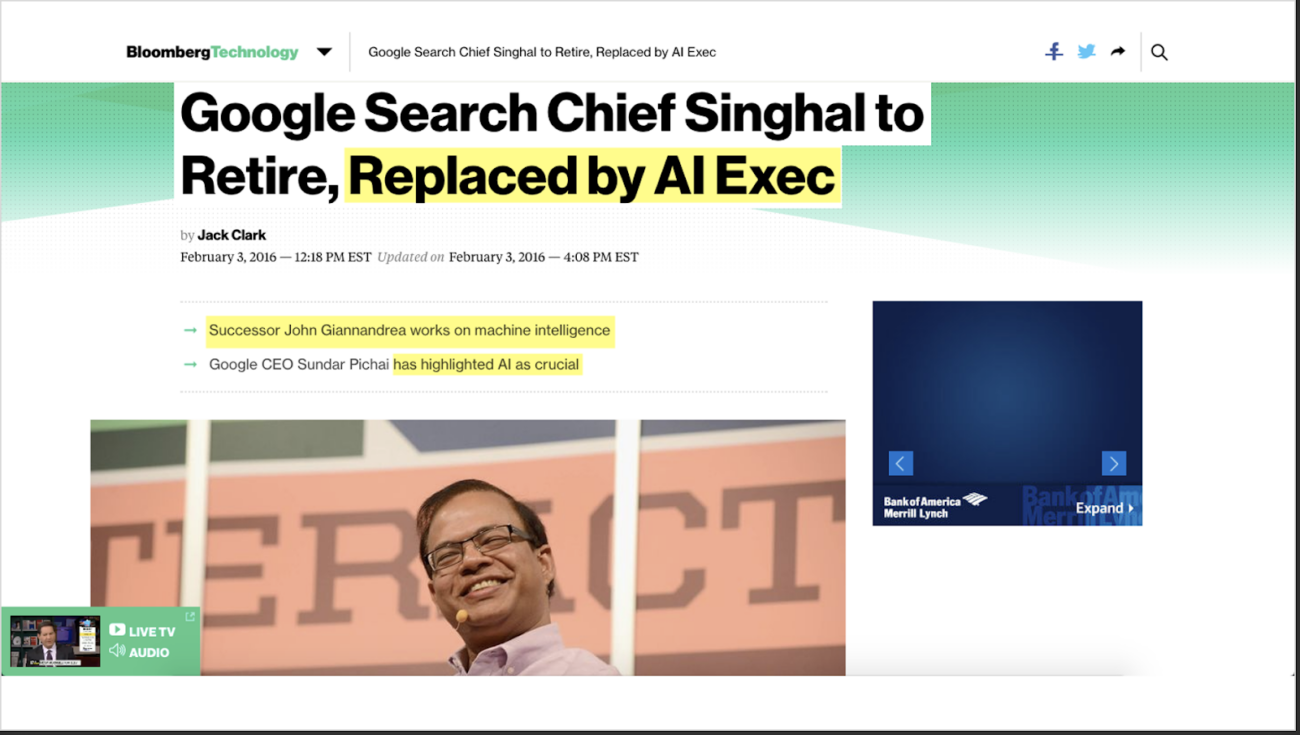
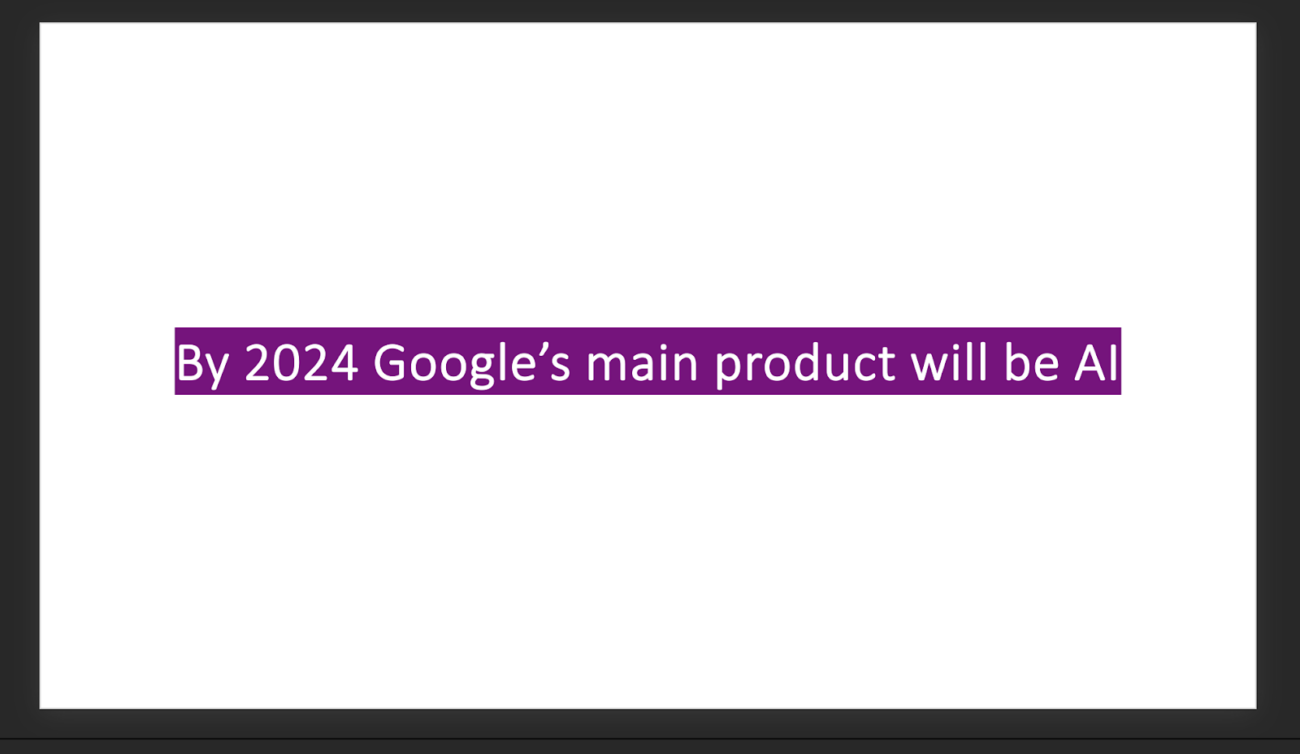
Google has been designing its AI powered search engine for many years now and even though their current efforts seem rushed (which they probably are) due to Bing’s early start in the AI space, we will most likely see more and more AI in search in the near future. The only question is – how do we prepare ourselves and our clients for the upcoming revolution?
How to prepare for SGE?
The only way for us to prepare for what’s coming is to fall back on hard data. With our research, we can already predict which keywords are the most susceptible to be affected by SGE (screenshot from one of our internal reports below).
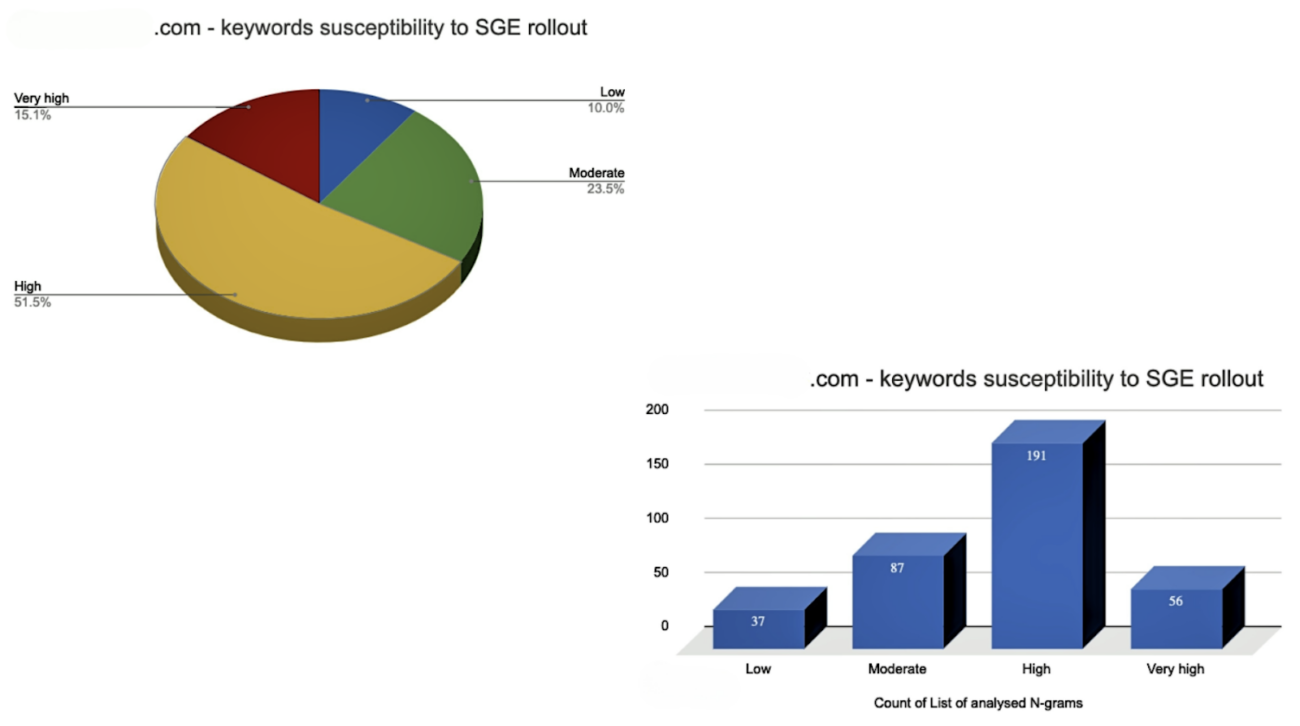
Having clear optics on what’s ahead of us is already an important step forward. With that we can focus on understanding how user journeys will change and how to adjust our websites not only not to lose with the upcoming changes, but also to find potential wins and position our projects to win with the upcoming changes.
Final thoughts
Google’s AI focus & SGE seem inevitable. We can expect a lot of adjustments and changes over the next few months, but looking at the data, I believe that most of the changes will be minor and Google will keep expanding their SGE coverage.
With each week, we gain more and more clarity into how the final product will look and all that is left for us (SEOs) is to make sure that we position ourselves and our clients on the winning side of this change and just as with all the previous major changes in Google, I am sure that the SEO community will adapt quickly just as we did with the Penguin & Panda updates that shook up the industry quite a bit 10 years ago.
If there is an industry ready for such a massive shift, it is ours. We’ll do our best @ Onely to constantly share actionable insights and help you throughout this journey. Stay tuned for more articles, webinars and podcasts as we’ll publish a lot more findings over the upcoming months.
If you have any questions or simply want to get more peace of mind throughout this SGE madness, don’t be a stranger, reach out to us and let’s chat!




